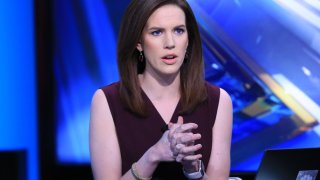
Here's a faulty thought process from 2008 that I see playing out all over again: "Hey, these banks collapsed and the economy is holding up just fine!" But the datapoint is not how the economy is doing the first few weeks after such a seismic event (I literally saw big bank research assuring us that "credit card spending was largely unaffected" in the days after SVB's collapse). The datapoint is that the seismic event happened in the first place.
"Financial panics often start with investors fleeing supposedly safe assets," wrote strategist Brian Reynolds the other day. "This panic began with what was supposed to be the safest of the safe assets, bank deposits." A massive flight to safety by uninsured depositors has now resulted in the biggest bank failures since 2008, but because regional bank stocks have since stabilized, we're supposed to believe the panic is now over.
Not so fast. The panic would truly be over if Congress stepped up with a backstop that made bank deposits safe again. "Uninsured deposits present a larger systemic risk than money market funds or commercial paper did in prior crises," Reynolds wrote. (Only 55% of deposits are currently insured, according to Moebs Services.) Reynolds' proposed policy response: guaranteeing all bank deposits for two years while limiting how much risk banks can take based on the amount of uninsured deposits they have. Sounds extremely reasonable.
Unfortunately, we are nowhere near such a solution coming out of Congress. The two-day hearings on SVB and resulting commentary made it clear that lawmakers would rather point fingers at the Fed, at the bank's own mismanagement, and even at depositors themselves instead of coming up with a policy solution that would truly stop this crisis in its tracks.
Get DFW local news, weather forecasts and entertainment stories to your inbox. Sign up for NBC DFW newsletters.
"Ironically, if they did a blanket guarantee now, it probably wouldn't cost taxpayers a dime," longtime bank investor Ben Mackovak, who runs Strategic Value Bank Partners, told me, because it would stop the deposit flight. But after meeting with lawmakers earlier this week, he concluded "there is no appetite to do anything with FDIC insurance until there is another bank failure." And this is the sad crux of the whole issue: we are now setting ourselves up for more banks to fail, which will worsen the outcome for the U.S. economy.
Just look at the downgrade of Caterpillar and United Rentals earlier this week. "A 2024 slowdown was already on the horizon, but now is increasingly likely given ongoing regional lenders' turmoil and their sizeable participation in commercial construction lending," wrote Baird analysts, who cut both names to "underperform." They note the architectural billings index has already been in the sub-50 contraction zone for five months, with "a perfect track record of predicting downturns" in spending--and this was before the regional bank stress.
Meantime, just because the acute phase of deposit flight has ended, doesn't mean it won't resume again, more slowly, in the weeks and months to come. "Bank deposits are in the midst of a two-stage shift," wrote Joseph Abate of Barclays yesterday. "In the first, solvency concerns drove deposits from banks. But as this fades, a second stage is emerging, driven by interest rate differentials."
Money Report
People, in other words, still are going to move a significant amount of money out of banks and into higher-yielding Treasuries and money-market funds, he and others warn. Money-fund balances "have risen an average of 20% over the past four rate hike cycles," Abate wrote, meaning another trillion dollars of deposits could still flow into such funds in the next several quarters.
This is a disaster for banks, who will need to raise deposit rates sharply in order to compete, which will seriously hurt their profitability (and will tighten their credit provision to the economy). And it's why the KRE regional bank ETF remains around 25% below its pre-SVB-collapse levels. Once again, if the Fed cut rates here, that could help start to staunch the massive outflows. Instead, they just hiked rates again, which will exacerbate all of these issues.
The Fed is over-tightening in the face of a looming downturn, and Congress won't do anything until panic resumes and more banks go under. We've been at such junctures before, and they don't end well for the U.S. economy.
See you at 1 p.m...
Kelly
Click HERE to sign up for this newsletter in one easy step.
To hear this as a podcast, subscribe to "The Exchange" and pick "From the desk of..."






